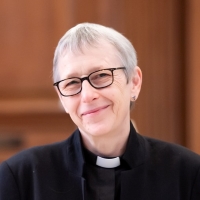The church in Oxfordshire where I served my curacy, was blessed with one of the finest and most complete sets of mediaeval wall paintings in the country – culminating in a portrayal of the Ascension of the Risen Lord into heaven, on the wall behind the high altar. It is a wonderful scene: the gathered disciples are shown looking at one another in amazement as, above their heads, two feet can be glimpsed vanishing into the clouds as the ascending Lord finally disappears into orbit.
And of course, to those who produced those kinds of images of the Ascension, it all made perfect sense. If you were departing to be with God, it was obvious that the only way to go was upwards, because the heavens were the dwelling place of God.
Which leaves those of us, who know rather more than they did about what is actually ‘up there’ in a rather curious position. What possible sense can we make of an event like the Ascension of Christ? And this is an important question because it seems to me that the Ascension is quite rightly regarded as one of the most significant festivals of the Christian year – we just need to find a slightly different way of thinking about it.
Some years ago, before he became Archbishop of Canterbury, Rowan Williams used an image to help to explain the meaning and significance of the Ascension which I have always found extraordinarily helpful, and to which I have often found myself returning. Which is this.
Imagine for a moment that you have been sitting for a long time in a very dark room – when suddenly somebody comes in and switches on the light. I am sure you will recognize that kind of experience and your reaction to it. The light is dazzling, overwhelming, almost painful. At first, the only thing you are aware of is the dazzling glare, which almost blinds you with its intensity. But gradually, as your eyes become accustomed to the brightness, the objects in the room around you start to come into focus; and the intensity of the light slowly diminishes, until after a few moments you are at last able to see clearly. But the really interesting thing to remember about that kind of experience is that the light itself hasn’t changed at all during that process. What has changed is our response to it: the adjustment that our eyes have made, following that initial dazzling and disorientating shock.
Now, if you think about the experience of the first disciples, you might begin to see the point of this analogy. At the Resurrection, they were so dazzled by the sudden and unexpected presence of the Risen Christ in their midst that he was the whole focus of their attention. They could see very little beyond him; all they could do was simply to glory in the wonder of his presence.
But there had to come a time when that focus changed; when the disciples started to see, not only the light of Christ, but also, very importantly, the world illuminated by that light. And the Ascension marks the point of that transition. It marks the point at which the disciples finally begin to prepare for their own ministries, seeing the world through the light of the Risen Christ, and taking Christ’s light into the world. Which is why the Book of Acts begins with the Ascension of Christ. It is the natural point to begin the story of the formation of the Church and the proclamation of the good news of Christ to the world, which is what the Book of Acts is all about.
And of course, it is also generally true that whenever anything of a momentous nature happens to us, whether it is something unimaginably wonderful (falling in love, perhaps), or devastatingly appalling (such as the loss of someone close to us), whenever such a life-changing event occurs, there is a period of time when that person, or that event, so preoccupies our waking thoughts that the rest of life somehow goes out of focus. Our attention and our energies are totally taken up in the experience that has engulfed us.
But eventually there needs to come a time when a shift of focus must take place, so that we can begin to re-engage with the rest of life again, albeit from a quite different, and perhaps radically altered perspective. The world is a different kind of place, and so we must learn to live in the world anew.
I always find the ten days that separate the Feast of the Ascension, which we celebrated here on Thursday, and the Feast of Pentecost, which we mark next Sunday, to be one of the strangest periods in the Christian calendar. The Risen Lord has now ascended: he has withdrawn from our sight; and yet, his final promise to us – that he will send the Holy Spirit to comfort and guide and empower us – has yet to be fulfilled. So while we are in this strange theological no man’s land, we have to learn to live in hope and in trust. And that in itself represents in microcosm what much of the journey of faith is about: a journey that requires of us trust and hope in relation to a future that can at times feel very uncertain as it continues to unfold for us. That is the kind of journey that we are all undertaking.
There will, of course, be times when all of us find it difficult to remain trusting and hopeful. Because hope always has to compete with the temptation to despair. But if we are ready to look for them, the Lord has a habit of entrusting to us just enough glimpses of wonder and grace, sometimes in the most surprising of people and places, to sustain us on that journey when times are hard – and to reassure us of all the wonderful things of God that are yet to unfold: gifts that go far beyond anything we could either wish for, or hope for.
And thanks be to God for that.
Amen.



